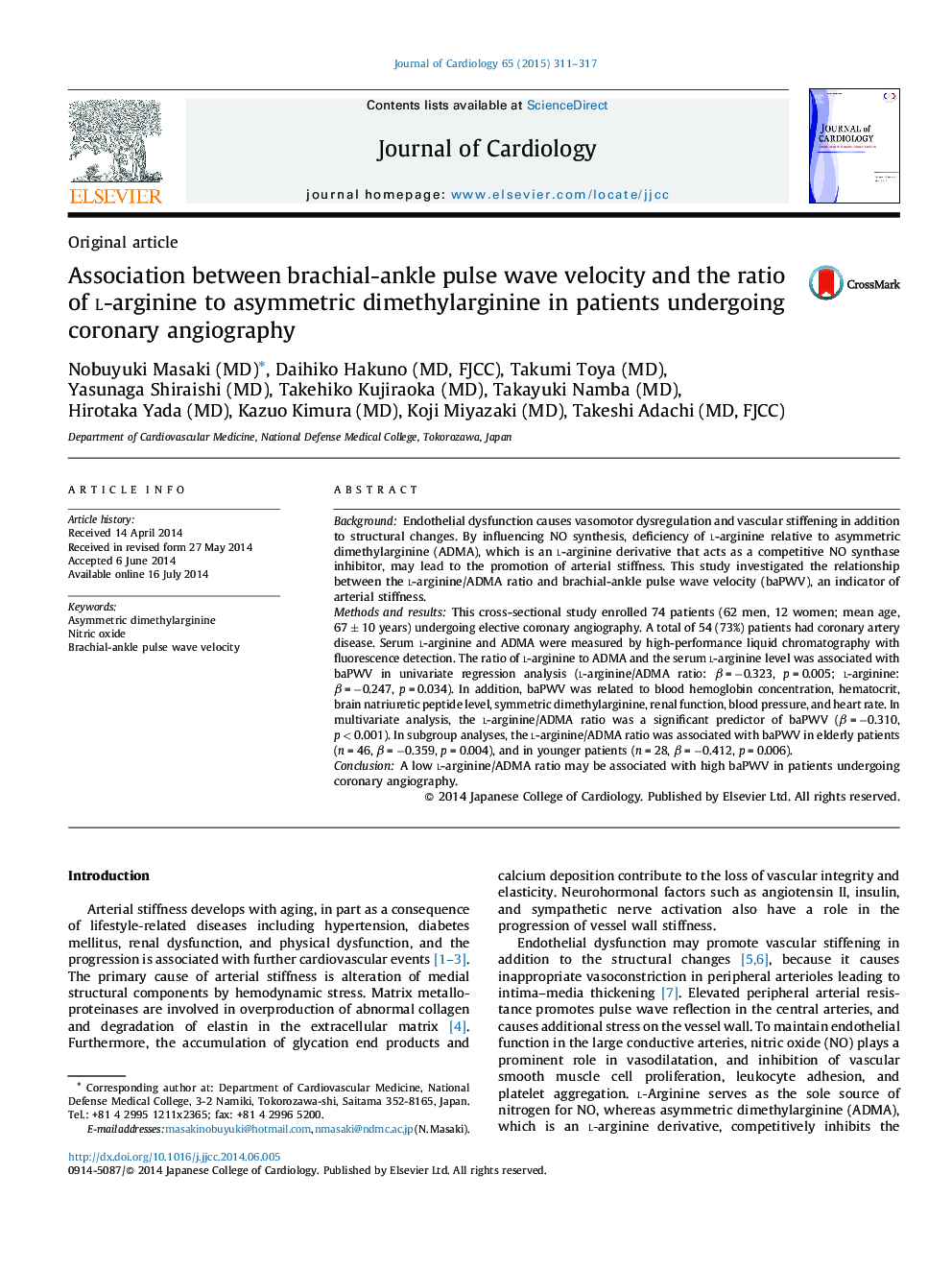| Article ID | Journal | Published Year | Pages | File Type |
|---|---|---|---|---|
| 2963068 | Journal of Cardiology | 2015 | 7 Pages |
BackgroundEndothelial dysfunction causes vasomotor dysregulation and vascular stiffening in addition to structural changes. By influencing NO synthesis, deficiency of l-arginine relative to asymmetric dimethylarginine (ADMA), which is an l-arginine derivative that acts as a competitive NO synthase inhibitor, may lead to the promotion of arterial stiffness. This study investigated the relationship between the l-arginine/ADMA ratio and brachial-ankle pulse wave velocity (baPWV), an indicator of arterial stiffness.Methods and resultsThis cross-sectional study enrolled 74 patients (62 men, 12 women; mean age, 67 ± 10 years) undergoing elective coronary angiography. A total of 54 (73%) patients had coronary artery disease. Serum l-arginine and ADMA were measured by high-performance liquid chromatography with fluorescence detection. The ratio of l-arginine to ADMA and the serum l-arginine level was associated with baPWV in univariate regression analysis (l-arginine/ADMA ratio: β = −0.323, p = 0.005; l-arginine: β = −0.247, p = 0.034). In addition, baPWV was related to blood hemoglobin concentration, hematocrit, brain natriuretic peptide level, symmetric dimethylarginine, renal function, blood pressure, and heart rate. In multivariate analysis, the l-arginine/ADMA ratio was a significant predictor of baPWV (β = −0.310, p < 0.001). In subgroup analyses, the l-arginine/ADMA ratio was associated with baPWV in elderly patients (n = 46, β = −0.359, p = 0.004), and in younger patients (n = 28, β = −0.412, p = 0.006).ConclusionA low l-arginine/ADMA ratio may be associated with high baPWV in patients undergoing coronary angiography.
